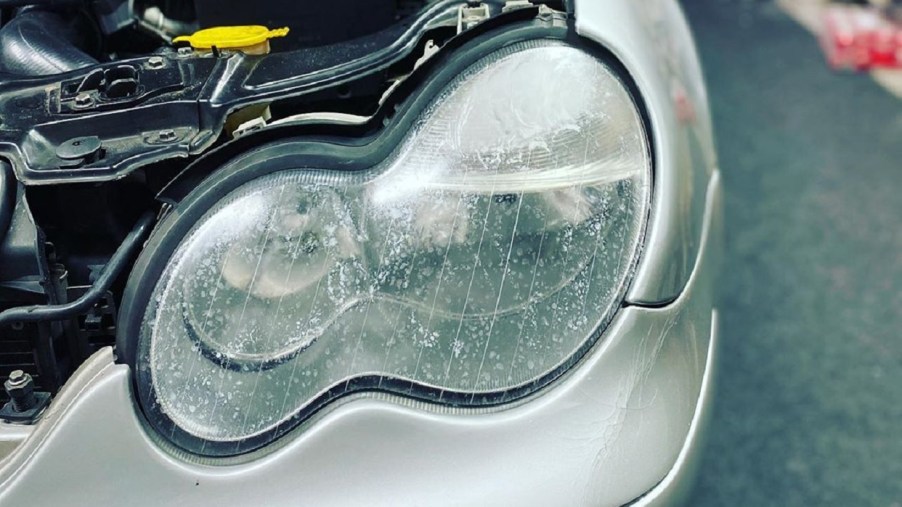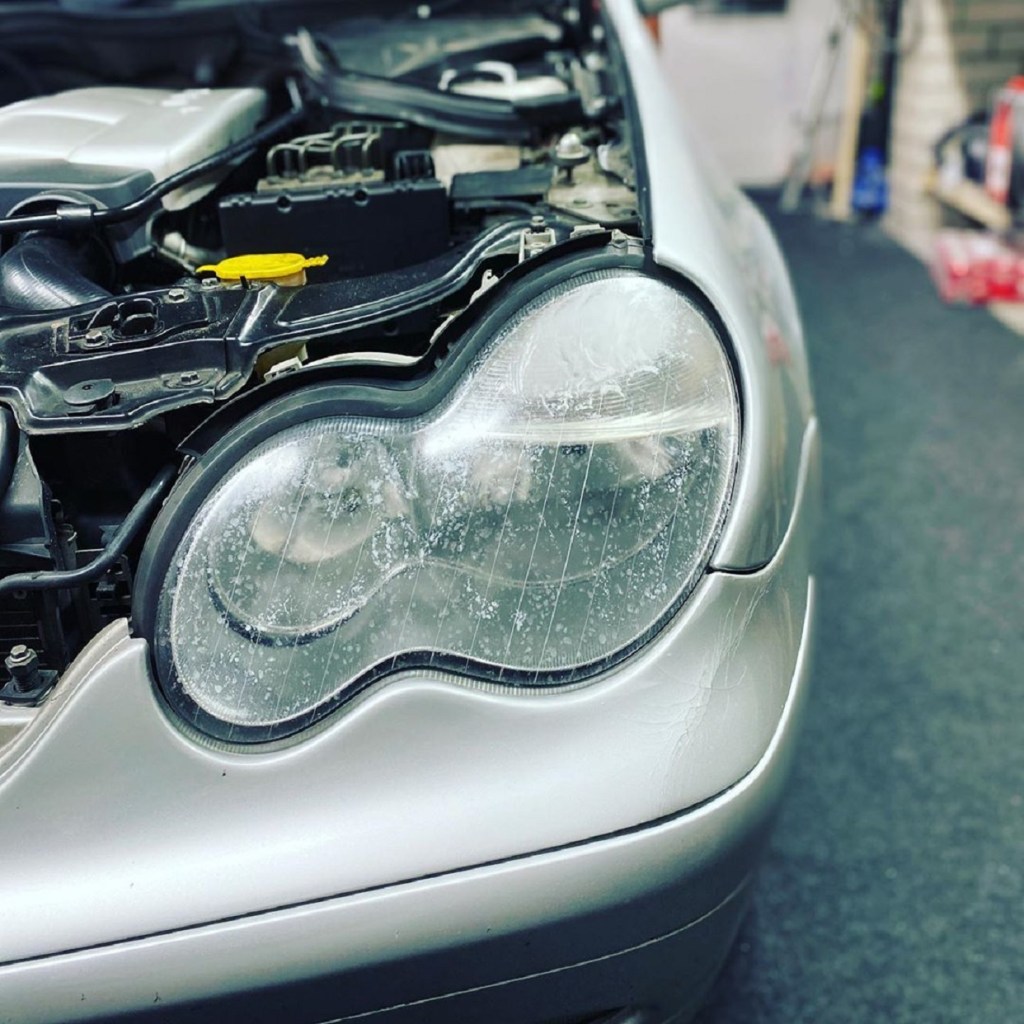
How to Clean and Restore Foggy Headlights
When brand new, modern headlights can seem almost too bright. But, like almost everything in and on a car, they’re still maintenance items. And not just the bulbs. Over time, headlights can become foggy or cloudy. In some cases, they may start to yellow. However, unlike a burned-out or broken bulb, foggy headlights don’t always need to be replaced. With the right tools, you can clean and restore them to almost-new looks.
Why do headlights get foggy or cloudy?

Although foggy headlights can look like cloudy ones, the two aren’t necessarily the same thing.
Your headlights may be foggy, NAPA explains, due to condensation. As with water in your tailpipe, a bit of condensation isn’t necessarily a problem. Halogen bulbs, unlike LEDs, naturally heat up as they’re left on overtime. Especially in humid conditions, when the bulb cools off, water vapor in the surrounding air condenses, creating a foggy-looking headlight.
Headlight assemblies do have built-in vents to help air circulate and water vapor escape. But these can become blocked. In addition, the headlight assembly, or the seal around it, can become damaged. And where there’s a crack, water, whether from rain or car wash, can get in. However, water is just one reason why headlights can become foggy or cloudy.
Although headlights were originally made of glass, modern ones are made of durable plastic, such as polycarbonate. However, just like rubber components, such as tires, plastic is vulnerable to UV rays, MotorWeek explains. And being outside the car, headlights are also exposed to the elements. Over time, sunlight, road debris, bug guts, chemicals, and acid rain, damage, and yellow the plastic, Pro Car Mechanics explains.
Removing the fog
Even if it’s just condensation, driving around with foggy headlights isn’t safe, ItStillRuns reports. Not only does it reduce illumination, but the water can also get into electrical components, and cause short-circuits.
If there’s only a little bit of condensation, Autozone reports, a rag, and some silica gel packets will do the trick. Or, use a hairdryer. But don’t break the seal between the headlight assembly and the rest of the car. Instead, remove the bulb, and wipe off the inside of the lens. Also check if the assembly vents are blocked, preventing vapor from leaving, either from road debris or even spider webs. Finally, see if any of the seals and O-rings have degraded, cracked, or dried out. If so, they should be replaced.
However, if you’re noticing a lot of water, not just condensation, your headlights, or their main seal, is likely broken. Both are replaceable, though putting in a new seal will require silicone sealant.
Cloudy headlight cleaning and restoration
But, even if your foggy or cloudy headlights aren’t due to condensation, they can still be cleaned and restored.
There are a few videos showing how it’s possible to clean or ‘de-haze’ foggy headlights with WD40 or bug spray. However, as Speed Society explains, this is at best a temporary solution. It’s not actually fixing the plastic, just filling in the cracks. As soon as it washes away, the problem will come back. Plus, bug spray with DEET can make your headlights sticky, and even damage them further.
To truly restore foggy and cloudy headlights, Consumer Reports explains, requires sanding, polishing, and re-sealing the plastic lenses. Several companies, like 3M and Sylvania, produce comprehensive headlight restoration kits, The Drive reports. Some can be used entirely by hand, though a few use electric hand-held drills to speed things up.
It’s possible, Bridgestone reports, to use toothpaste or baking soda instead of a headlight restoration kit. Both function as minor abrasives, YourMechanic explains, though sandpaper is more effective, Popular Mechanics reports. In both cases, though, you’ll need to follow up the polishing with a UV sealer, to guard against future damage.
Follow more updates from MotorBiscuit on our Facebook page.


